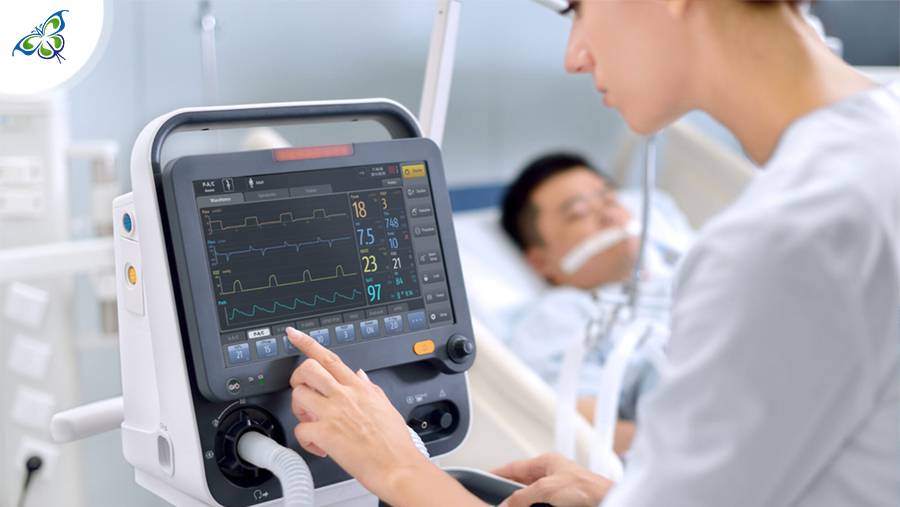
Hello
Select Address

Ventilators are an essential medical device available in every hospital and old age homes. This machine provides breathable air to patients who face difficulty in inhalation and exhalation. A ventilator might be essential for any of the following situation:
Whether invasive and noninvasive ventilation, a mechanical ventilator has five parts:
• Respiratory circuit – These are tubes that ensures the connection between the patient and the ventilator machine. These are the most critical part of a ventilator; without these, the ventilation process would be impossible. Also, it is recommended to be changed after a week’s usage.
It can be either double-limb or single-limb circuits. The double-limb respiratory circuit has two limbs connected to the inspiratory and expiratory ports ending with a Y-piece ending. Single-limb circuits have a single tube for both inspiration and expiration with an exhalation valve.
• Power source – The mechanical ventilator either uses positive or negative pressure to perform the work of ventilating and the power source may be electrical power, pneumatic (gas) power, or a combination of the two. In the case of a portable ventilator, a rechargeable battery (direct current) is used.
• User interface – It is a touchpad for adjusting the ventilator’s settings used by the physician or respiratory therapist.
• Monitoring system – It provides direct visualization of flowtime and pressure–time waveforms.
• Safety Measures – Ensures protection of the patient in case the ventilator malfunctions.
Keeping all the parts in mind, here are the essential supplies of a ventilator and brief details of their function –
1. Gas Blender is used to control the gaseous mixture being delivered to the patient. This is especially required if only atmospheric air is involved and no gas source is used. The volume and pressure of the gas can be adjusted according to the requirement of an adult or premature infant.
2. Inspiratory Flow Regulator regulates the prescribed flow of gases. This is a valve and is attached to the front end of the gas source.
3. Humidifiers heat up and supply evaporated water into the gas mixture. These are required by most ventilator users. It helps to cope up with the dryness in the nose and throat.
4. Expiratory Pressure regulator or PEEP valves maintain positive airway pressure at the exhalation end. This prevents the lungs from collapsing and decreases alveolar rupture.
5. Inspiratory filters are used to purify the inhaled gas of any airborne impurities that can be harmful to the patient.
6. Expiratory filters are to purify the exhaled gas and protect individuals around the device and the ventilator parts from the exhaled air.
7. Alarms are included as a part of functionality to protect the user from uncontrolled changes in the ventilation settings.
8. Flow meters are used to monitor the gaseous supply and analyze pressure drops. In a mechanical ventilator following kinds of flow meters are employed: hotwire anemometer, ultrasonic flowmeter, orifice meters, and linear pneumotachographs.
9. Aneroid Manometers or pressure sensors are used to measure pressure in the breathing circuits.
10. Ventilation masks are often the underrated part of supplemental oxygenation therapy. These masks are nasal, oro-nasal or full-face masks to achieve the non-invasive positive pressure ventilation.
Patients suffering from neurodegenerative diseases like amyotrophic lateral sclerosis (ALS) need ventilation and they use home care ventilators that are convenient in operating with a wide display, inbuilt safety, and alarm system for constant monitoring.
It is of utmost importance for the family members to have some basic knowledge of the principles of ventilator design and function of various parts so that in an emergency, they can be of direct help until the medical team takes control.